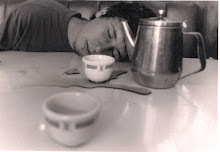
To be free is possible in the mode of like-being-free; to be free is affirmed in an experience similar to that of anyone found in the special case of that metamorphosis which is to get out of prison, to enter a new life (however fleeting), determined essentially thanks to the testifier: liberation. This latter consists in knowing oneself to be as in prison, that is, in quest of a liberation rigorously comparable to freedom.
“Promise of happiness?” To look for the way out by going upward, by way of the “summit,” where there is no way out. To act as though the direction of the summit pointed toward a way out. The elevated point is the one whence I perceive the promised land (as land) with an awareness of the as. He perceives the promised land as the one that one cannot enter; the revelation, upon “dying,” of a freedom which will not take place as a possession, but consists in the “liberation” of relating oneself to what there is as unto the promised land. In turn they shall understand only upon dying, and bequeathing in turn this music. Music gives through movement the schema of a movement of “sublime” revelation. The revelation is that of the as; to relate oneself to what is by means of the as. What is, is the testifier for what is.
Art is always about a transformation principle; and it is about transforming so that in the operation of transformation freedom takes hold of itself in a movement whereby the world appears in the self-image it conceals, and whereby the possible is less a project of fulfillment than the appearance of a figure not to be confused with the “dream to fulfill.” The difference between a painting and a house makes the house habitable; and it is about not eliminating one or the other through erasure of their relationship of similitude, but pursuing their difference, a relationship as such, which connects the two through the noted articulation of the as, that makes the world livable. The belief required by the work is a belief in the promise of the world’s relation to its figure, not in the fulfillment of a paradise based on the model of fiction.
Let’s come back to utopia in the sense of that place in the place beyond place which distends and hollows our timespace in keeping with the as, in keeping with the “poetic” relation to it which allows one to be there, to refer to our condition whereby it is like a prison and a liberation. Start again from the difference between representation (theater within the theater: reiteration of the as, not indefinitely, but once) and a policy of taking metaphor literally in ignorance of the value of metaphor. The play must be performed in order to avoid dictatorship. The deadly misinterpretation is when power takes Wagner out of the theater for a “Wagnerian” staging of the city, of life; reality becomes a nightmare when the “dream” invades the real. It is in the other direction one must go.
Münchhausen paradox . . . Can a poem all by itself: a) figure the prison, the “alienated” condition, by revealing it to the reader as a figuration of this world; b) meanwhile therein figure itself as a prison “of words,” through what setting in abyss? c) be at the same time a lever for getting out, and the movement of a liberation toward a salutary “outside” . . . that is a lot to ask.
Is it the question of the sublime, or search for a point whereby to uplift oneself? A point in discourse which is not merely discourse? Would there be a possibility of connecting sublimation with that point of detachment which sees the figure as such: the “as as as”? Reaching that point through rhetoric, that loftiness of speech which is a point of transformation of the subject, therefore, into thought: indeed into language, but inasmuch as it is my language, my word. Hence at once “of language” and other than “verbal”; no difference between thought and language, to be sure, save what the term “my” suggests and all words that refer to the speaking subject.
--Michel Deguy (trs. Wilson Baldridge)

No comments:
Post a Comment